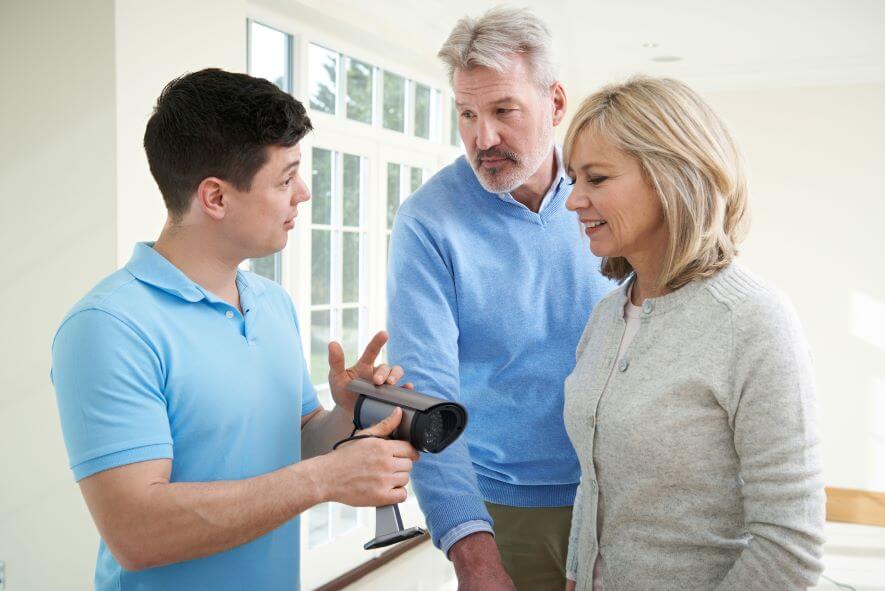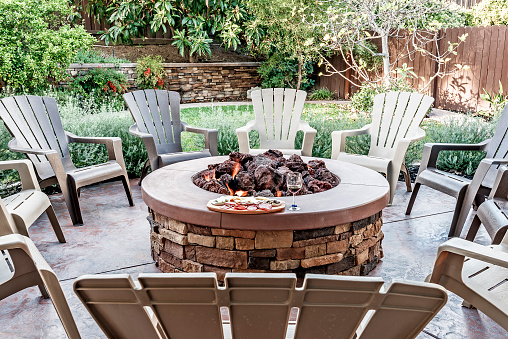The Atlantic hurricane and tropical storm season typically begins around June 1 and extends through November 30, and its effects can be felt not only along the U.S. coast but also further inland — in the form of tropical storm flooding. If you don’t have a plan in place to protect your family and your property from tropical storm damage, including flooding, now’s the time to get started.
Characterized by high winds, heavy rainfall, lightning, and flooding, tropical depressions, tropical storms, and hurricanes can cause devastating — and costly — damage. In 2017 alone, 17 named storms, including 10 that became hurricanes, six of which became major hurricanes (Category 3, 4, or 5), hit the Atlantic United States, as reported by the National Oceanic and Atmospheric Administration (NOAA).
Tropical storm flooding is the flooding that results from a tropical storm. The more you know about tropical storm flooding, the better prepared you’ll be to minimize potential damage and losses to your property.
What is a Tropical Storm?
A tropical depression, a tropical storm, and a hurricane are all variations of a tropical cyclone; which name applies depends on the severity of the tropical cyclone. A tropical storm is a form of tropical cyclone with wind speeds higher than a tropical depression, but lower than a hurricane — that is, a storm with sustained winds between 39 and 73 miles per hour.
A hurricane or typhoon has maximum sustained winds of 74 miles per hour or more. According to the National Hurricane Center’s Glossary, the term “hurricane” is used for Northern Hemisphere tropical cyclones east of the International Date Line to the Greenwich Meridian. The term “typhoon” is used for Northern Hemisphere Pacific tropical cyclones west of the International Date Line.
A tropical cyclone only forms over warm ocean water close to the equator. They’re characterized by deep convection — turbulent air movement based on temperature, with warm air rising — and closed surface wind circulation — wind moving in a circular pattern above a clearly defined center. Once they get going, they keep going with heat energy pulled from the warm tropical waters.
According to NASA, a tropical storm is really just a more intense tropical depression, which is a tropical cyclone that “forms when a low pressure area is accompanied by thunderstorms that produce a circular wind flow with maximum sustained winds below 39 miles per hour.” To get upgraded to a tropical storm, the cyclonic circular motion strengthens and intensifies, while wind speeds increase to up to 73 miles per hour. If and when a tropical storm intensifies to include sustained wind speeds of 74 miles per hour or more, it then becomes a hurricane.
How Do Tropical Storms Cause Flooding?
Coastal areas often bear the brunt of flooding from tropical storms, whether from the rainfall or from storm surge — the ocean water that is pushed toward the shoreline from the storm or hurricane. However, even areas that are hundreds of miles inland can experience tropical storm flooding, since heavy rainfall often accompanies tropical storms as they move inland.
While tropical storms are officially less “intense” than hurricanes, due to their lower wind speeds, they can produce more rainfall — leading to more flooding — than a Category 5 hurricane, according to NOAA.
For example, Hurricane Harvey made landfall in Texas on August 25, 2017, as a Category 4 hurricane with wind speeds of 130 miles per hour. Yet it was when Harvey was downgraded to a tropical storm and then slowed down to hang out over Texas between August 26 and 30 that it caused the most damage, resulting in historic severe flooding in areas like Houston. Harvey set a record for the most rainfall ever from a tropical cyclone — a whopping 51 inches of rain.
Watch out for three types of tropical storm flooding.
Depending on the intensity of the storm, the amount of rainfall, and the geography of the surrounding area, tropical storms can cause different types of flooding. Your family and property may be at risk from the following tropical storm flood types:
Flash floods. These develop quickly in a matter of hours or even minutes, and can occur due to large amounts of rainfall or even a levee break. They’re fast and strong, and can destroy trees, homes, and vehicles, and also can trigger mudslides.
River floods. If you live near a river, you may be used to preparing for spring floods, as rivers swell with melted snow from the spring thaw. Yet tropical storm flooding can cause rivers to flood their banks as they rise, due to the tropical storm rainfall. In 2011, Hurricane Irene broke more than 26 river flooding records in New York, New Jersey, and Vermont alone.
Urban floods. While you may love the new roads in and around your neighborhood, or the great new parking lot at the arena or shopping center, all that paving makes the land in your area less able to soak up a lot of water. So, when a tropical storm moves through, urban areas experience what’s known as runoff. The concrete and pavement can’t absorb the rain, so it “runs off,” turning city streets into dangerous urban waterways.
Know the difference between a flood watch and a flood warning.
The sooner you’re alerted to an impending tropical storm surge or flood watch or warning, the more time you’ll have to take action to protect yourself, your family, and your property.
According to NOAA, a tropical storm warning announces that a tropical storm with winds in the range of 39 to 73 miles per hour is expected to occur in an area within the next 36 hours. A tropical storm watch announces that a tropical storm with these wind speeds is possible in the area within the next 48 hours.
You may learn of tropical storm watches and warnings several ways, including:
Local radio and television station news
The National Hurricane Center online
Updates to local National Weather Service websites
National Hurricane Center mobile updates for your smartphone
NOAA Weather Radio (available for purchase online and in stores)
In 2017, NOAA’s National Weather Service and National Hurricane Center launched new Storm Surge Watches and Warnings to advise Atlantic coast residents of impending storm surges from tropical storms.
Protect your property from tropical storm flooding.
It’s tough to try to protect your home from flooding as the waters are rising. Instead, take precautions to minimize unnecessary tropical storm flooding damage to your home and property long before summer storms arrive.
Actions to take outdoors may include:
Clearing gutters and making sure they’re positioned to divert water away from your home
Grading the landscaping to slope away from your home to discourage water pooling around your house
Clearing any storm drains of debris such as dirt, twigs, and leaves
Inside your home, check the following:
Confirm the presence of check valves (or install them) on the sewer traps in your home to help prevent floodwaters from backing up and entering your home through the drains.
Consider purchasing and installing a battery backup or generator to run sump pumps if there’s a power outage.
If you live in a flood-prone area, think about having trenches dug in the basement to drain water to the sump pump.
Fix any cracks in basement and ground floor walls or floors.
Move important items to the highest floors to avoid potential floodwater damage.
Store important documents in a safe, waterproof place.
Remember, don’t wait for a tropical storm warning to get started on preventative measures to protect your property. Give yourself the time to make the necessary adjustments and repairs.
Prepare your family as well.
Today’s storm warning system has become increasingly accurate at predicting serious impending weather conditions like winter blizzards and summer storms. Still, once a warning or watch is issued, you’ll have a very limited time to get your family to safety.
Following evacuation orders isn’t optional. You must prepare to leave your home immediately. Don’t risk the lives of yourself and your family to try to ride out a storm and potential flooding in the hope of protecting your home.
Don’t wait for an evacuation order to start packing your bags. Instead, long before storm season, put together a plan that includes identifying your evacuation route, packing emergency supplies, and sharing a family emergency plan so you aren’t scrambling in the face of a tropical storm or flood. Remember to bring cash, your wallet, passports and ID, and any required medications.
Understand flood insurance vs. homeowners insurance.
Did you know that most homeowner insurance policies do not include flood insurance? Yet, according to FEMA, flooding is the top natural disaster in the United States. Purchasing flood insurance is an important part of protecting your family belongings and finances, whether you live in a typically high-risk area for flooding or not. In fact, as the 2017 storm season illustrated, changing climate and weather patterns mean that traditionally moderate- to low-risk areas are seeing increasing risks from flooding.
Fifty years ago, the National Flood Insurance Program was created to help property owners and renters purchase federally-backed flood insurance. The fact is that repairing flood damaged property is expensive, and disaster assistance funds often won’t cover the total repair costs. Homeowners can insure homes for up to $250,000 and the home’s contents for up to $100,000 under the NFIP.
Taking steps to protect your property from the risks associated with tropical storm flooding simply makes good financial sense.
Don’t wait for tropical storm season to protect your home and belongings. The Hartford offers National Flood Insurance Program coverage to AARP members. Learn more today.






